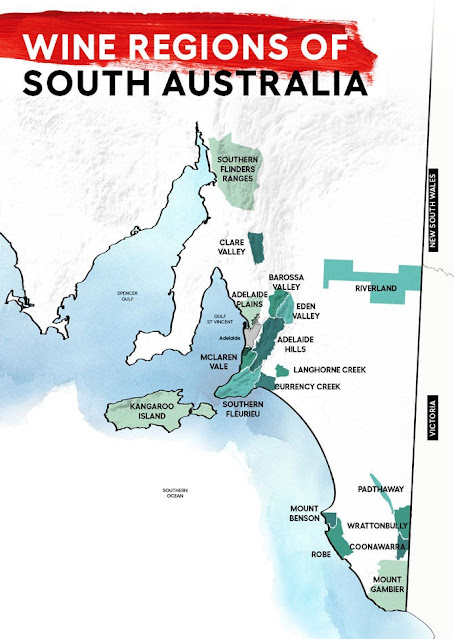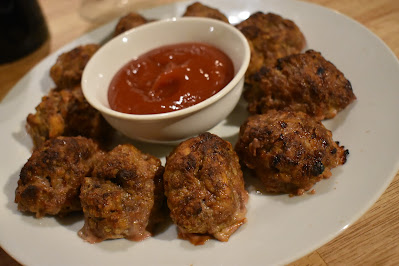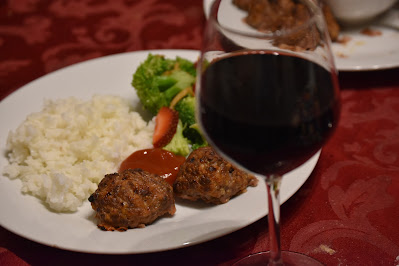This month the #WorldWineTravel group is headed to the South Australia wine region with an eye on the red wines of the area. Gwendolyn of
Wine Predator is leading the discussion and you can read her invitation.
here.
If you are reading this early enough, feel free to jump in to our Twitter chat on Saturday, February 26th at 8am Pacific time. We will be live and you can follow along with the hashtag #WorldWineTravel. And be sure to add that to anything you tweet so we can see it. Here's the line-up of articles on the subject...
- Allison on AdVINEtures pours The Great Australian Red Wine: Cabernet-Shiraz.
- Camilla goes Beyond Shiraz in South Australia with Dagwood Dogs, Rissoles, and a Limestone Coast Cabernet Sauvignon on Culinary Adventures with Camilla.
- Cindy has Powerful, Prestigious Barossa Valley Shiraz on Grape Experiences.
- Jeff brings Riverland Surprises in South Australia on Food Wine Click!
- Linda offers Barossa Shiraz from ‘All the Land Around’ on My Full Wine Glass.
- Nicole will be Splurging with Penfold's Bin 389 and Oxtail Stew on Somm's Table.
- Robin suggests South Australia – Cabernet from Coonawarra & Fortified Shiraz from McClaren Vale on Crushed Grape Chronicles.
- Susannah shares Barossa Valley Memories on Avvinare.
- Terri has Penfold's Koonunga Hill Shiraz Cabernet and Busy Day Soup on Our Good Life.
- Wendy is Visiting South Australia; Home to one of Australia's Oldest Wineries on A Day in the Life on the Farm.
- And host Gwendolyn on Wine Predator, has Celebrate Family Fun with Eight at the Gate: 2 Shiraz with Pie Floaters.
South Australia
South Australia is one of the most productive wine producing regions in Australia and accounts for nearly half of wine made there and houses some of the oldest vines in the country. Within the region that straddles the center of the country you will find sub-regions of Adelaide Hills, Adelaide Plains, Barossa Valley, Clare Valley, Coonawarra, and more! And among those, you will find a broad spectrum of climates and wine styles.
But the predominant grape of South Australia is Shiraz - or Syrah - which clocks in at nearly forty percent of the wine made.
Limestone Coast

After an experience of smelling dirt at a wine tasting event years ago, I have always been intrigued to read about the soils of a vineyard. So, I was immediately drawn to a wine from the Limestone Coast which lies in the southeast corner of the state, bordering Victoria on the east. Additionally, the wine I found wasn't a Shiraz. I was doubly excited.
Further research taught me about the nutrient and drainage qualities of limestone, both of which attribute to positive growing environments for the vines and are crucial to the grapes during the dry ripening season. While Shiraz rules supreme throughout most of South Australia, it is Cabernet Sauvignon that rises to the top on the Limestone Coast in this cooler maritime climate.
The bottle I found was a Cabernet Sauvignon from Coonawarra in South Australia from the Limestone Coast: Berton Vineyards Metal Label Cabernet Sauvignon 2018. Bob Berton has nearly three decades of vintages to his name though he didn't start Berton Vineyards until the mid 1990s when he acquired a plot of land in High Eden, a subregion of Barossa Valley. Throughout the subsequent years, Berton jumped on opportunities to purchase more land. Now he has estates within the Limestone Coast, Barossa Valley, High Eden, and elsewhere in South Australia. He crushes and ferments grapes from each vineyard separately, then grades and blends to create his wines.
The Metal Label is one of three tiers of wine, however none of them price out at more than thirty dollars a bottle. This one was less than fifteen on wine.com. A big, rich Cabernet, this wine poured an inky violet color. On the nose I jotted down fruit, fruit, and more fruit. But it was really layers of currant and blackberry with hints of vanilla, oak, and even some pine. Those latter notes kept the wine from being just a big jam ball! And moderate tannins lingered on the palate.
Dagwood Dogs
Along with the #WorldWineTravel's dive into the wines of Australia, I wanted to explore some of the Aussie cuisines. Last month I shared
Aussie Burgers with the Lot when we focused on Western Australia. This month, though not specific to South Australia, I read about Dagwood Dogs and Rissoles. That's really corndogs and meatballs for us non-Aussies.
Years ago, my kids discovered a love of corndogs so much so that as a hot lunch option at school, R picked a corndog for his first time at not bringing a lunch from home in kindergarten. He sang a little ditty everyday for a week: "five days to corndog day...three days to corndog day..." all the way to "today is corndog day!" Corndog day was a disaster as he didn't understand the ticket system or getting in line to get his food. It was awful, but it didn't do much to dampen his enthusiasm for these cornbread-dipped dogs.
So, I figured out how to make them myself.
Ingredients serves 4
Dagwood Dogs
- 8 hot dogs
- 8 sticks
- Peanut oil, canola oil, or vegetable oil for frying
- Ketchup and mustard to serve
Batter
- 1-1/2 cups yellow corn meal, fine
- 1-1/4 cups flour
- 1 Tablespoon organic granulated sugar
- 1 Tablespoon baking powder
- 1/4 teaspoon salt
- 1-3/4 cups buttermilk
- 1 large egg
- 1 Tablespoon olive oil or vegetable oil
- 1 Tablespoon raw honey or maple syrup
Procedure
Pour 2 to 3 inches of oil into a large pot or Dutch oven. Heat to 350 degrees Fahrenheit over medium heat. Pat the hot dogs dry with paper towels and insert sticks into them.
Whisk together dry ingredients (corn meal, flour, sugar, baking powder and salt). Whisk together wet ingredients (buttermilk, egg, 1 Tbsp oil and honey). Combine wet and dry ingredients and whisk to combine.
Pour batter into a drinking glass almost to the top and dip hot dogs. Put corndog straight down into batter and give it a little twirl to fully coat the hot dogs then swirl as you lift up. Let excess drip off.
Hold corn dog at an angle in the hot oil for 5-7 seconds to let it seal then drop into oil (this keeps them from sticking to the bottom of the pot).
Fry 3 minutes or until golden brown. Fry up to 2-3 at a time (so you don’t drop the temperature), turning them as needed to brown evenly. Transfer to a wire rack to cool.
Rissoles
Australian rissoles are meat patties or meatballs. They can be grilled - I baked mine - and are served with ketchup.
Ingredients
- 1 pound ground beef
- 1 onion, finely chopped
- 1 cup bread crumbs
- ½ teaspoon dried herbs (I used and Italian seasoning)
- 1 Tablespoon fresh parsley, chopped
- 1 egg, beaten
- Also needed: baking sheet, parchment paper
Procedure
Preheat oven to 375 degrees Fahrenheit. Mix all the ingredients together in a medium mixing bowl. Shape into balls and elongate slightly. Rissoles should be about 2 inches long for a main dish or smaller as appetizers. Place rissoles on a parchment paper-lined baking sheet. Bake for 30 to 35 minutes until the rissoles are first to the touch. Serve with ketchup.
That's a wrap for my South Australian post for the #WorldWineTravel group. Stay tuned for our March event when we discuss South Australian white wines with Lynn of
Savor the Harvest leading the discussion. Stay tuned...









